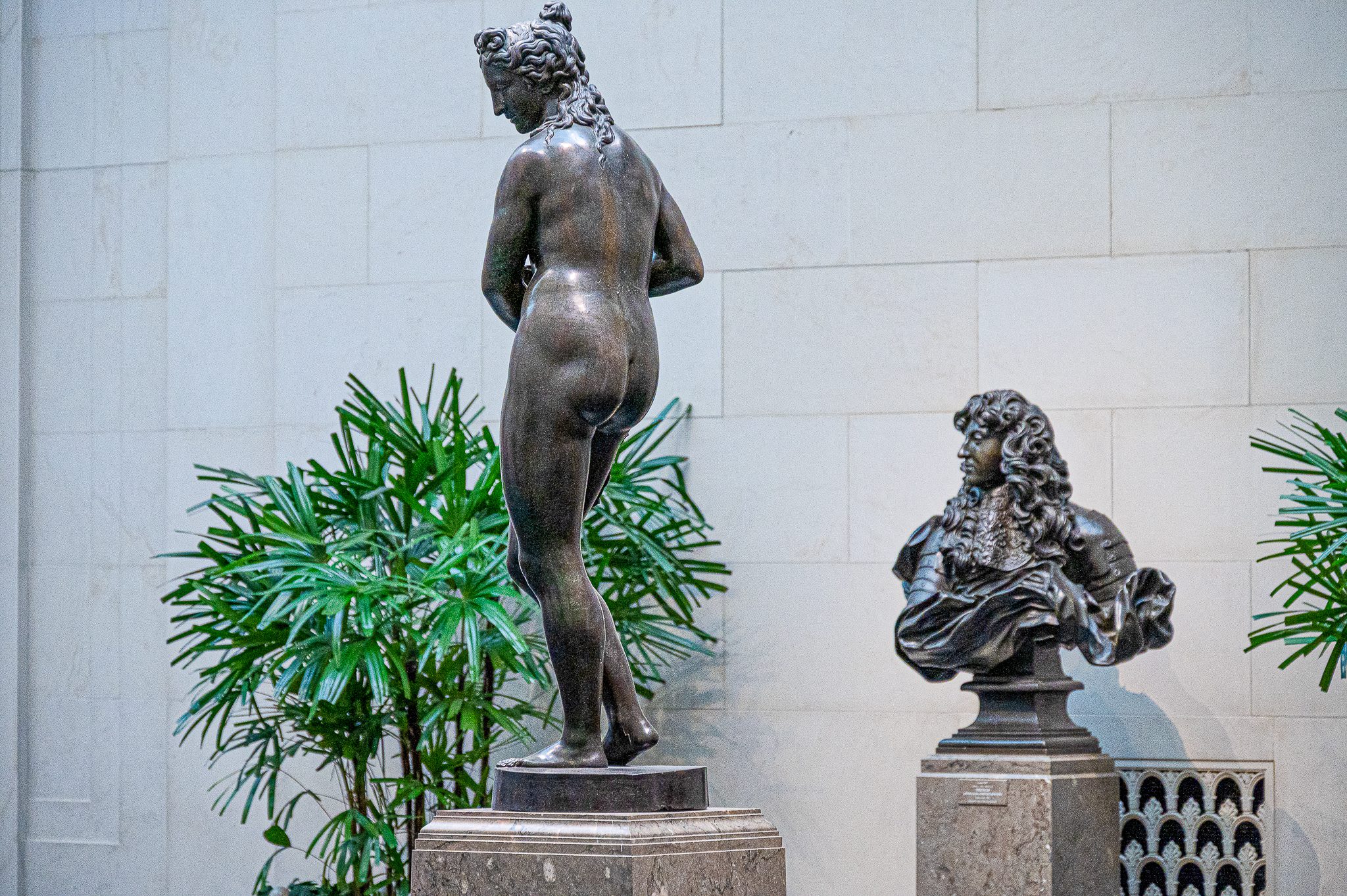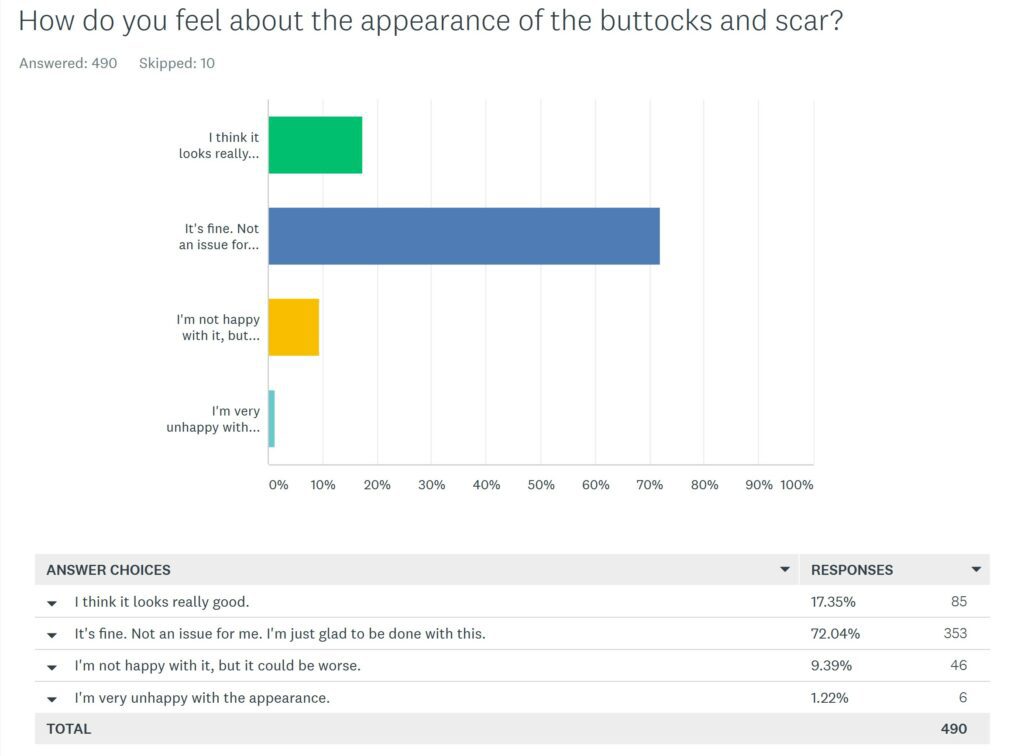
The Cosmetic Appearance of A Pilonidal Cleft Lift
What does the contour of the gluteal area look like after a cleft lift?
When I am performing a cleft lift we are dealing with patients of various body shape, amount of body hair, and location of their pilonidal cysts, sinuses and wounds- so the final appearance is different from person to person, and the subjective opinion regarding the change is quite personal. My feeling is that although we are making a significant change in the contour, we are turning it into a shape that is very natural.
Here are some examples:
These are photos of post op cleft lift patients with the actual scar Photoshopped out so it doesn’t distract from the evaluation of the contour.
I recently published an article regarding patient satisfaction with the cleft lift procedure performed at our clinic. One of the questions asked how the patient felt about the appearance of the buttocks and scar (see graph below). Of 490 respondents, 98.8% felt it was acceptable. Only six were “very unhappy with the appearance” (1.22%). (Keep in mind that some of these patients had endured multiple previous operations, and started out with severe scarring and distortion even before they had their cleft lift.)

Conclusion
When surgeons first learn to perform the cleft lift procedure for removal of pilonidal cysts, sinuses, and wounds, their main goal is to remove the pilonidal disease and prevent recurrence. However, as we learn the procedure the goals expand to making the procedure less painful, make recovery smoother, and make the cosmetic appearance more natural.
If you have your surgery done by someone who performs these frequently, you may end up with a better cosmetic result.
In general, I feel that the cleft lift operation is the best procedure to cure pilonidal disease. But, it is not for everybody, and I understand if the cosmetic change is not something that a patient can accept.
If you feel that you can not tolerate the change in shape of the cleft or the presence of the scar – then the cleft lift is not the best option for you as your first operation for pilonidal disease. If other operations fail, it can always be considered as a secondary procedure.








